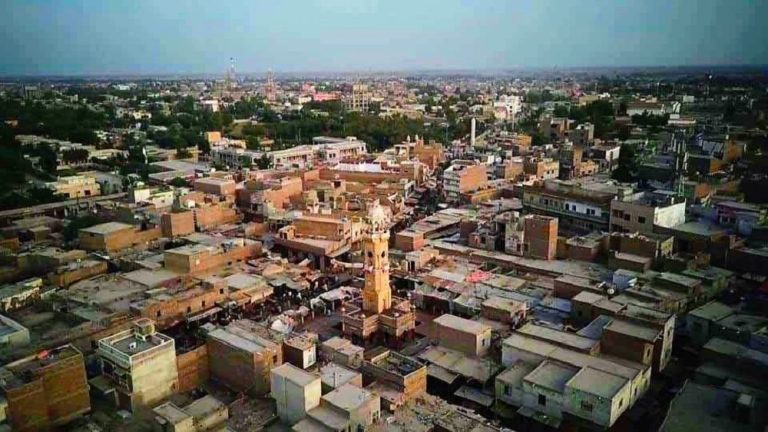
The Brigadier General John Jacob C.B. Christian Cemetery houses quite a few graves, but none is as significant as that of the man it is named after.
By Muhammad Asif Nawaz
Jacobabad today is a shadow of what it once was. While people are still discussing the vision of Brigadier General John Jacob for the city, there is not much evidence left of his concept for the city. The town that once impressed all, has lost any distinction it once had. Clustered lanes that are encroached at both sides, unruly traffic, and a cacophony of unbridled activity join with the dust and heat of the area to lend the place a chaotic character. And while Jacob’s monuments, which were written about in the previous article, are nothing less than a wonder, the most impressive and accessible structure in the city is the magnificent Victoria Clock Tower, which rises from the center of the old bazaar in the heart of the city.
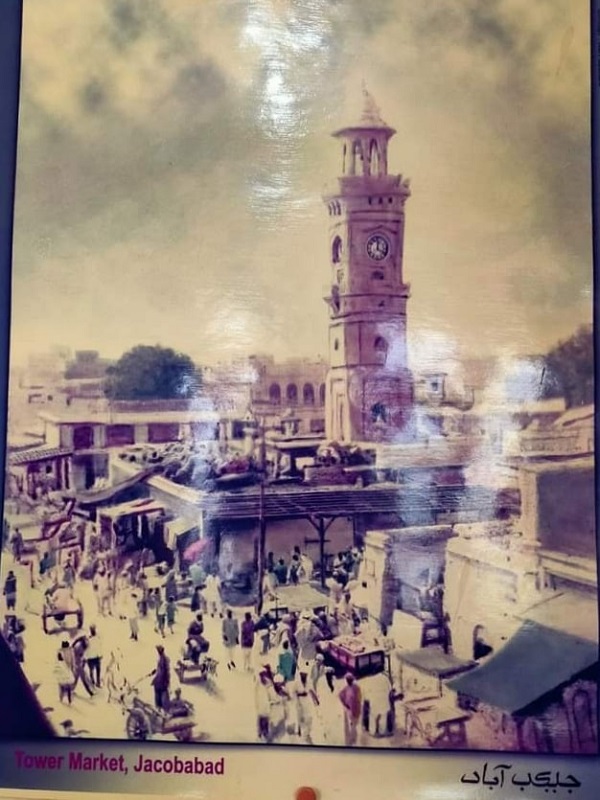
The Victoria Clock Tower is a 60-foot-high imperial monument, erected to commemorate the Jubilee celebrations of Queen Victoria in Jacobabad on February 16, 1887. The tower was designed by Colonel S. S. Jacob, who was a cousin of General John Jacob and served as the executive engineer of the Jeypore state. A dusty plaque on the building announces that the tower was erected by the subscriptions by the Zemnidars and other inhabitants of the Frontier District, the Hindu Panchayat, and the District Local Fund Board. The tower was inaugurated on November 21, 1888 by Miss Pritchard, daughter of the then Commissioner of Sindh.
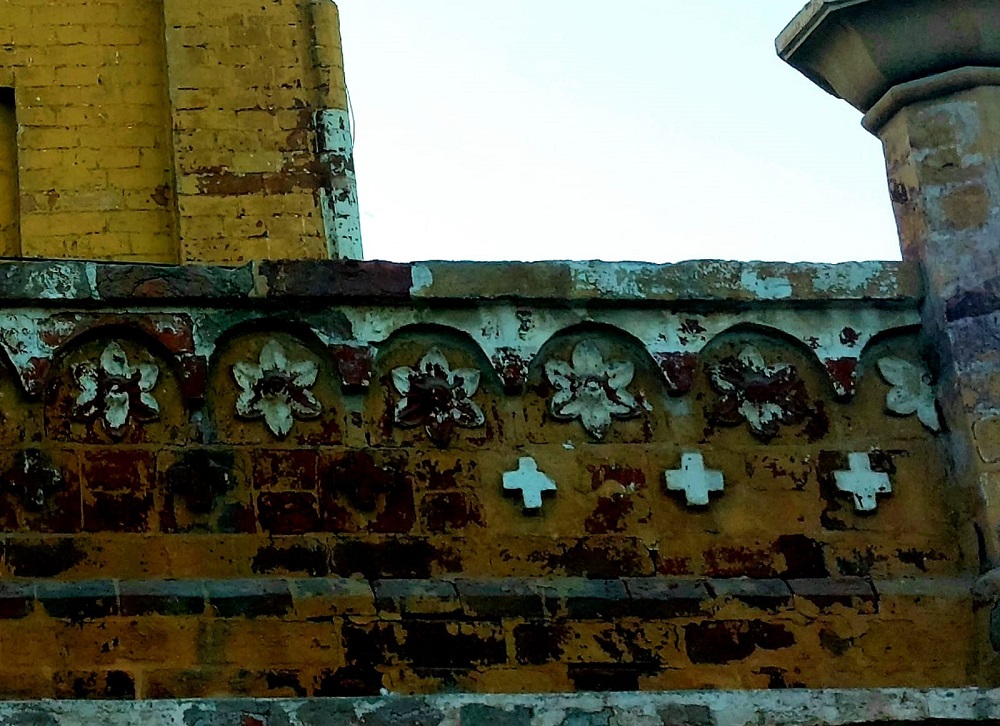
Today, the tower still exudes magnificence despite having fallen into neglect in the years since. The main tower rises above the smaller minarets, but the inside walls have caved in and it has too many cracks. However, the pigeons have made the tower their home, giving it a poetic atmosphere. Stairs that provided access to the tower have been restricted, but the details inside are awe-inspiring: flowers modelled throughout the width of the structure are accompanied by Christian crosses underneath, and there’s a hint of Mughal influence on the latticed screens of the tower. Not surprisingly, the clock after which the tower is named doesn’t work anymore, announcing the end of an era. As the sun sets over the tower, it gives it a golden sheen. John Jacob had died by the time this tower was built, but the stories about him continued. The most interesting bit of fiction you hear from the local guards is that Jacob had become so popular with his architectural and mechanical prowess in the city that the Queen, sitting as far away as London, got insecure at the possibility of one man casting his shadow over the empire. So the myth goes that the building of Victoria Tower was in fact thought of by her as a way to cement the authority of the crown in British India.
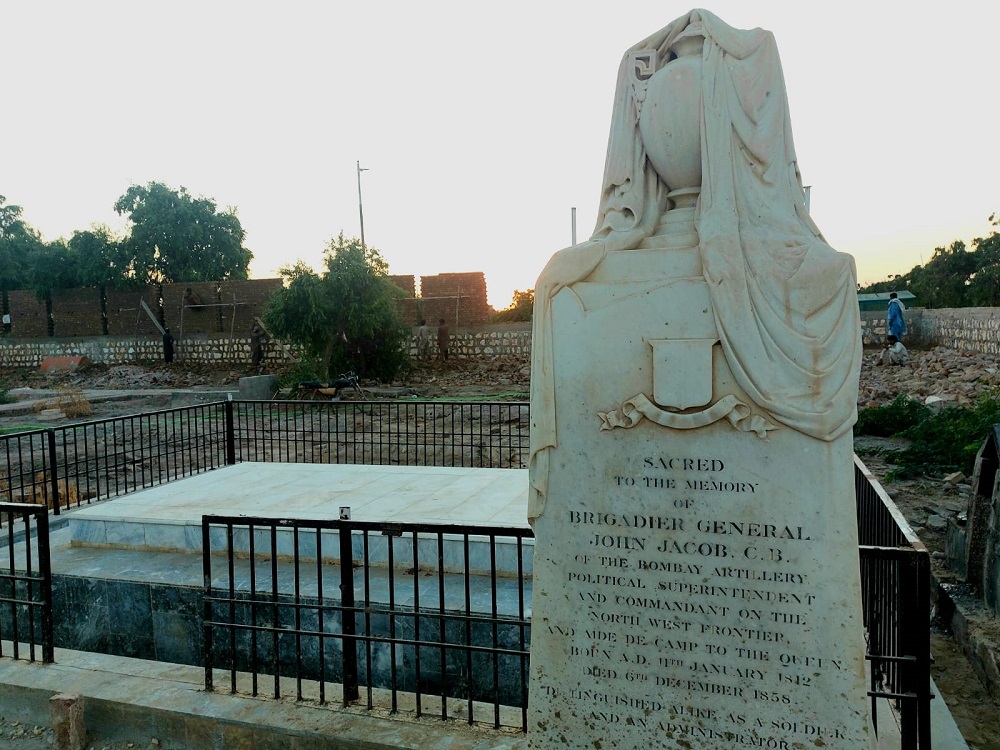
After marveling at the structure and taking its pictures (which is met with curious glares by the locals as not many people come here), there’s one final destination in the tour of Jacobabad.
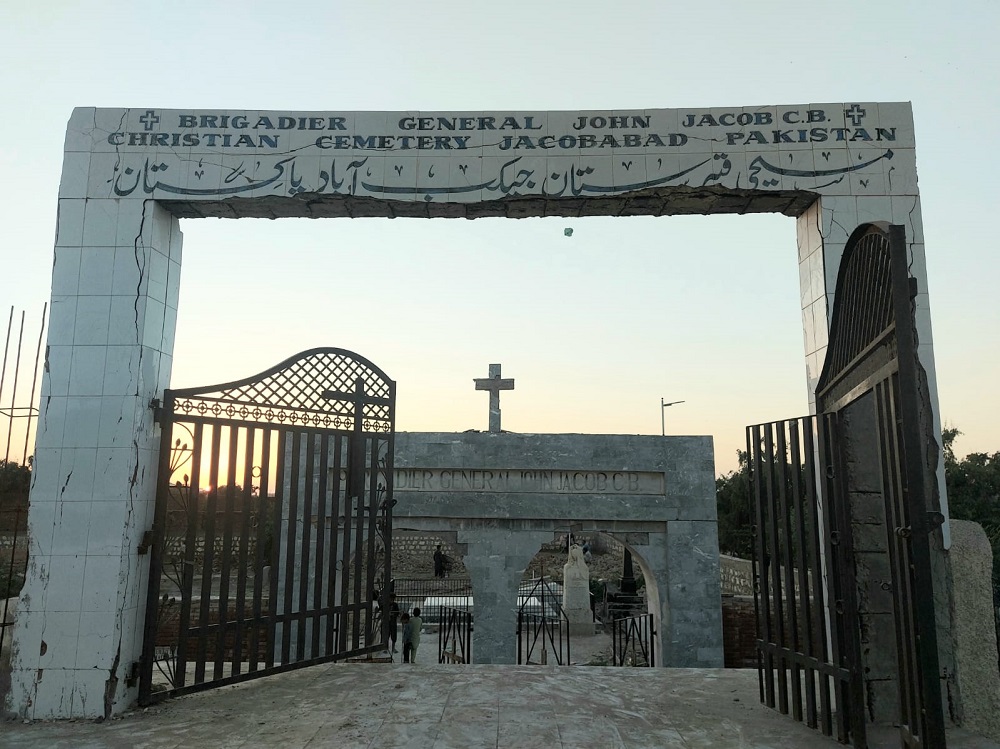
There is no better way to end a visit to Jacobabad than by visiting General John Jacob’s grave. Jacob never left the city after he made it his home, and he is buried within the same land that he contributed so much towards its improvement. The Brigadier General John Jacob C.B. Christian Cemetery houses quite a few graves, but none is as significant as that of the man it is named after. Inside the cemetery, beside the wide grave of Jacob, there is also a monument erected to honor his memory, which says: “Distinguished alike as a soldier and as an administrator”. Jacob died on December 6, 1858, but it was only after he inspired such reverence from the people of the area that no one in almost two centuries since has been able to match it, and consequently he enjoys a cult status in Jacobabad today. While other graves in the cemetery have either been washed away or eaten up, a plaque on the entrance reads that the place was restored in 1995, even though it had fallen into disrepair, because the people take ownership of Brigadier General John Jacob.
While the tide of history has swept away the British Empire, some colonial administrators have left an enduring legacy amongst the people, for which they are still remembered with reverence and affection.
_________________
Courtesy: Youlin Magazine, a cultural journal of Pakistan and China (Posted on: December 29, 2022)